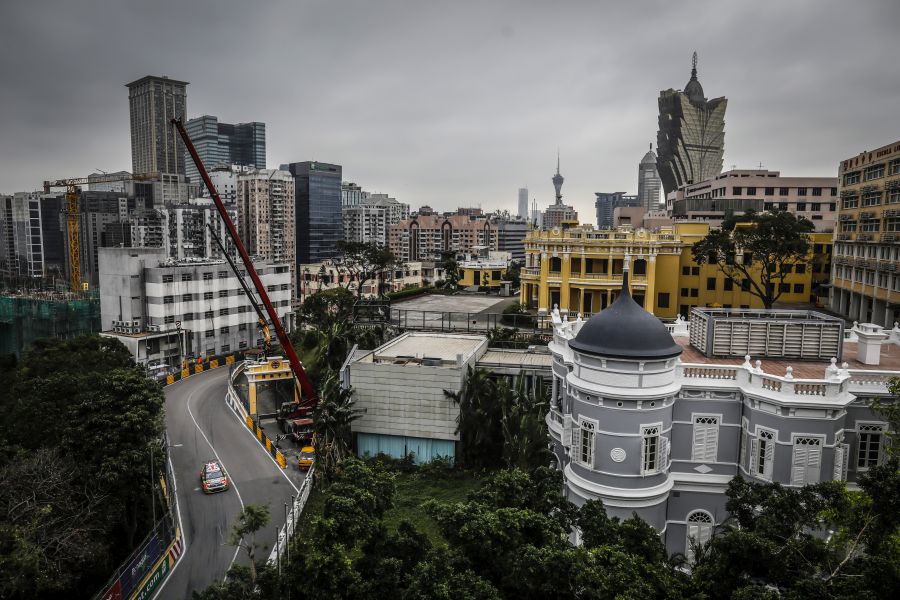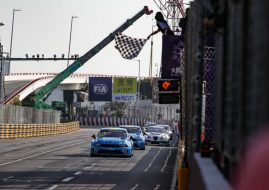Macau Guia Circuit - Asia's Central Place of Motorsport
The Macau Guia Circuit (Circuito da Guia) is a street racing circuit located in Macau, the historic city and a former Portuguese colony at the south-eastern coast of China. Guia Circuit is widely known as the venue of the Macau Grand Prix (under Formula 3 rules since 1983), but it also hosts prominent motorcycle races, touring cars and GT cars.
The circuit is unique because its 3.8-mile (6.115km) layout is virtually unchanged since the inaugural race in 1954, with only one minor modification in 1958 and the installation of the new pit and paddock complex in 1993. Guia’s 24-turn layout features one high-speed straight and numerous narrow bends between the buildings, so it’s considered as one of the world’s most demanding race tracks by many drivers.

Map: Macau Guia Circuit layout (illustrator Lau Ka-kuen)
The Guia Circuit history began as a funny idea
The story about Guia Circuit began in 1954 when a trio of local sportscar enthusiasts – Fernando Macedo Pinto, Carlos Silva and Paulo Antas – wanted some fun for the Sunday morning while they were sitting and drinking coffee in the Riviera Hotel. Their idea was to organize a motorized treasure hunt around a city. After the Macau government supported a plan, the Macau Grand Prix was born, as the Asian version of the Monaco Grand Prix.
The original circuit had a start-finish line near the Mandarin Oriental Hotel and it was 3.9 miles long (6276 meters). The course followed the harbor road down to the Lisboa Hotel, turning right between the houses and cliffs, passing many tight corners and going uphill to the old town. The circuit returned to the seafront at Fisherman’s Corner. The elevation difference between the highest and lowest point is 30 meters.
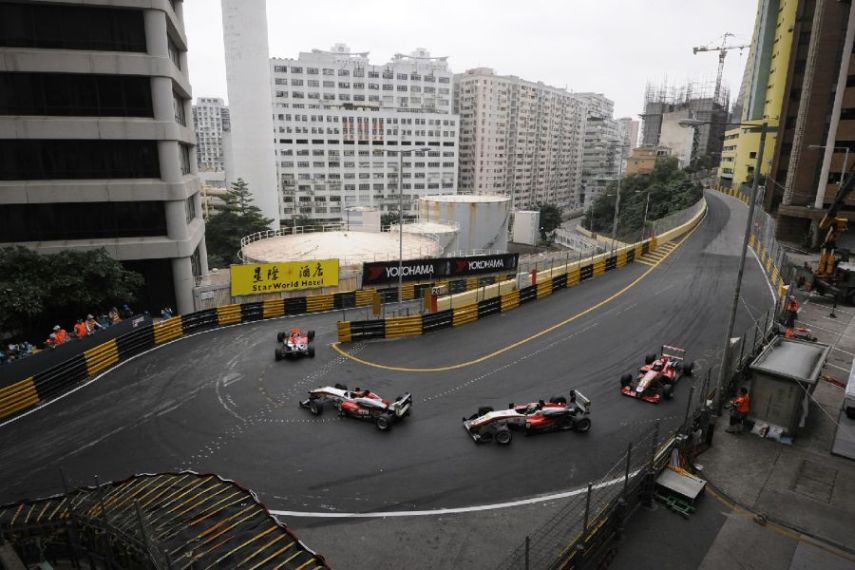
The Melco hairpin was modified in 1958
The race track was modified only once
The inaugural Macau Grand Prix was held on October 30/31, 1954, with Eddie Carvalho winning the race with a Triumph TR2. After receiving criticism about the track surface, the organizers improved a circuit for the next year, putting an asphalt and constructing the permanent concrete pits and paddock building opposite the Mandarin Oriental Hotel. In 1958, the only change of the layout was made, when the Melco hairpin was modified and the lap was reduced to 3.8 miles.
Year by year, the Macau Grand Prix established itself as the most prominent Asian race, attracting more and more European drivers. In 1966, the race winner was Mauro Bianchi. He competed in the factory-entered Alpine-Renault A210, the same he was driving a few months earlier at Le Mans. It was the first Macau Grand Prix won by professional. Bianchi was also the first driver who lapped around Guia Circuit in less than three minutes.
Unfortunately, Guia Circut also took some victims. In 1967, Arsenio Laurel was killed when he lost control and smashed into the wall. He was a son of the Philippines President and the first double winner of the Macau Grand Prix, after winning with Lotus 22 (Ford) in 1962 and 1963.
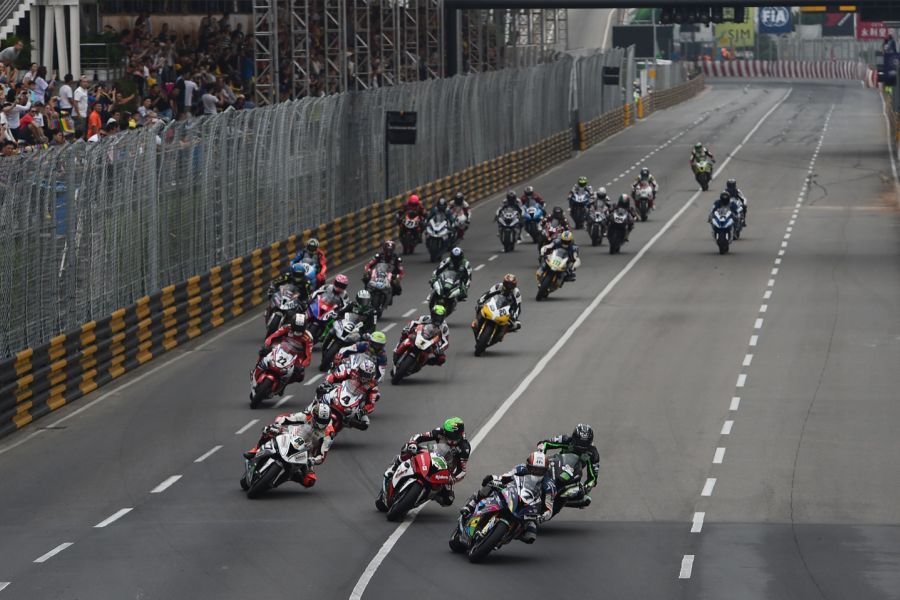
Motorcycle races are the regular part of the Macau Grand Prix since 1967
Motorcycle riders came to Guia in 1967
1967 was one of the milestone years for the Guia Circuit because motorcycle riders came to the race track that year, so the circuit became the venue for both two-wheel and four-wheel race vehicles. The first motorcycle winner in Macau was Yamaha rider, Hiroshi Hasegawa. After a period of domination by the Japanese riders, the British riders took the dominance in the mid-1970s, scoring 34 wins between 1976 and 2015.
In 1972, the third race was added to Macau Grand Prix event, the touring car race. John MacDonald was the first winner in a Mini Cooper and he also became the first and only Macau GP winner on both two and four wheels. He won the motorcycle race in 1969. He also won the main Grand Prix four times, driving Lotus (1965), Brabhams (1972, 1973) and Ralt (1976).
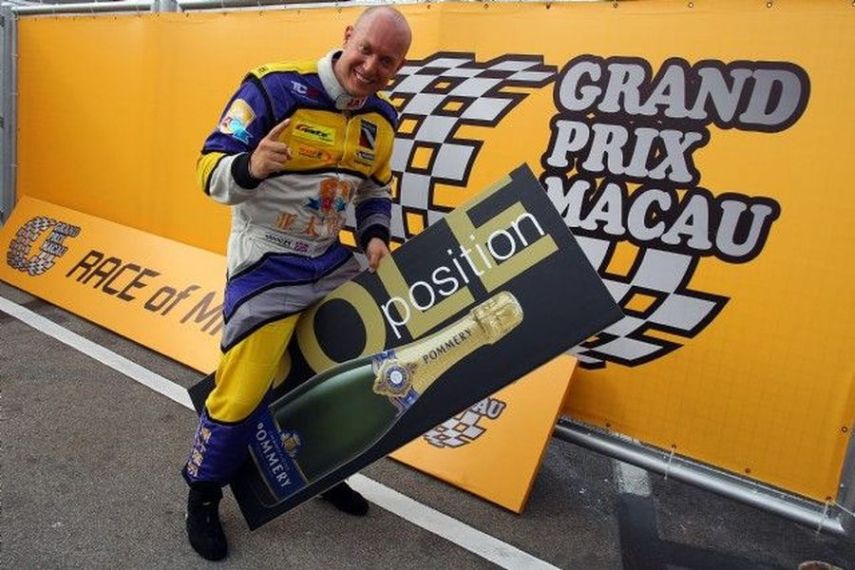
Rob Huff scored his 8th win in 2015 and then ninth win in 2017
Rob Huff is the King of Guia
Year by year, the status of the touring car race was growing, attracting works entries from BMW, Jaguar, Ford, Nissan and Volvo… Some of the world’s widely known drivers who won the touring car races at Macau during the 1980s, 1990s and early 2000s were Hans-Joachim Stuck, Manfred Winkelhock, Tom Walkinshaw, Johnny Cecotto, Roberto Ravaglia, Joachim Winkelhock, Emanuele Pirro, Frank Biela, Duncan Huisman and Jorg Muller.
In 2005, the Guia touring car race became the final round of the FIA World Touring Car Championship and it remained the final round until 2014. In ten seasons, twenty WTCC races took place at Guia Circuit and Rob Huff was the winner seven times with five different cars (Chevrolet Lacetti, Chevrolet Cruze LT, Chevrolet Cruze 1.6T, Seat Leon WTCC and Lada Granta).
In 2015, TCR International Series replaced WTCC, but Huff was the winner again, driving the Honda Civic TCR as a guest driver. He won again two years later when WTCC returned to Macau, driving a Citroen C-Elysse. With nine wins, Rob Huff is an absolute king of the Guia in all categories.
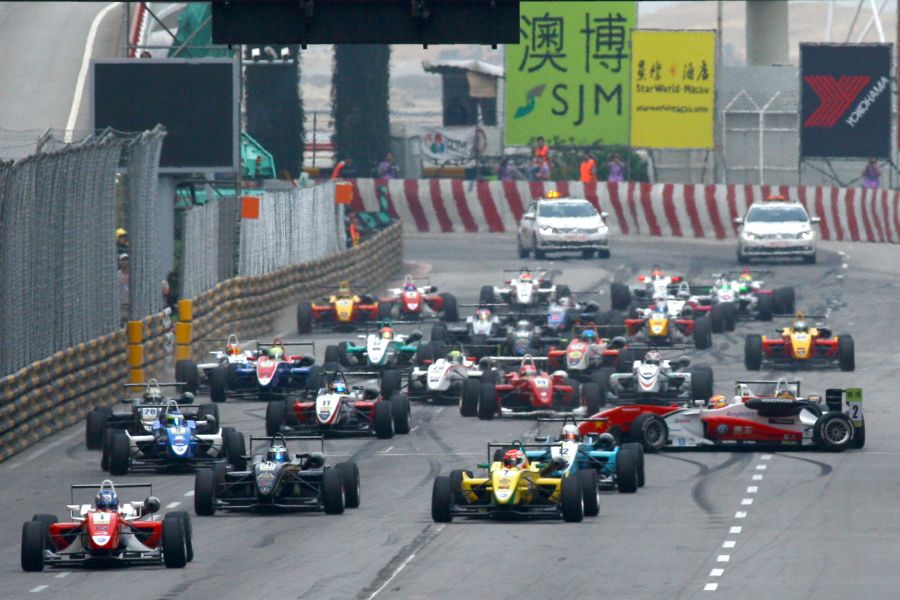
Formula 3 Macau Grand Prix
Macau Grand Prix became the must-win event for all young drivers
In the main race, the biggest change happened in 1983, when Macau Grand Prix adopted Formula 3 regulations. Prior to that, the races were held under Formula Libre and Formula Pacific rules. John MacDonald is a record-holder with four wins. Some other world-known drivers who won the Macau GP in the Formula Libre/Formula Pacific period were Dieter Quester, Vern Schuppan, Riccardo Patrese, Geoff Lees, Roberto Moreno…
The Formula 3 switch was a strategic move which converted Macau Grand Prix to one of the most popular non-championship races in the calendar. It became the must-win event for every youngster on the route to the premier single-seater category. In the next couple of years, some future F1 champions and many other future F1 drivers left their mark on the winners list at Macau.

Ayrton Senna and Teddy Yip at 1983 Macau Grand Prix
Ayrton Senna was the first Formula 3 winner at Guia
The first among them was Ayrton Senna, who won the inaugural Formula 3 Macau Grand Prix in November 1983. Earlier that season, he won the British Formula 3 Championship title. It was Senna’s last F3 season before he entered Formula One in 1984.
Michael Schumacher was the winner in 1990, his brother Ralph triumphed in 1995. Some other winners were John Nielsen, Mauricio Gugelmin, Andy Wallace, Martin Donnelly, David Brabham, David Coulthard, Rickard Rydell, Jorg Muller, Sascha Maassen, Ralph Firman, Takuma Sato, Nicolas Lapierre, Lucas di Grassi, Mike Conway, Oliver Jarvis…
Edoardo Mortara scored two consecutive wins in 2009 and 2010. He was followed by Dani Juncadella, Antonio Felix da Costa and Alex Lynn between 2011 and 2013. In 2014, Felix Rosenqvist became the second Swedish driver who won the Macau GP. He repeated a victory in 2015. The record lap time was set by Sergio Sette Camara in 2015, who needed 2 minutes 10.186 seconds for a lap.
The most recent winners were Antonio Felix da Costa (2016) and Dan Ticktum two times in 2017 and 2018.
GT races were added to Grand Prix schedule in 2008
After single-seaters, motorcycles and touring cars, the fourth motorsport event which arrived at Guia Circuit as a part of the Grand Prix weekend was the Macau GT Cup, inaugurated in 2008 and renamed to FIA GT World Cup in 2015.
The first winner was Darryl O’Young with Porsche, then Keita Sawa scored two wins with Lamborghini and then Edoardo Mortara triumphed three times in a row from 2011 to 2013, driving the Audi R8 LMS. The winner in 2014 and 2015 was Maro Engel with Mercedes. Laurens Vanthoor triumphed in 2016 in an Audi and then Edoarto Mortara clinched his fourth win in 2017. This time, he was driving a Mercedes. In 2018, Augusto Farfus gave a victory to BMW.
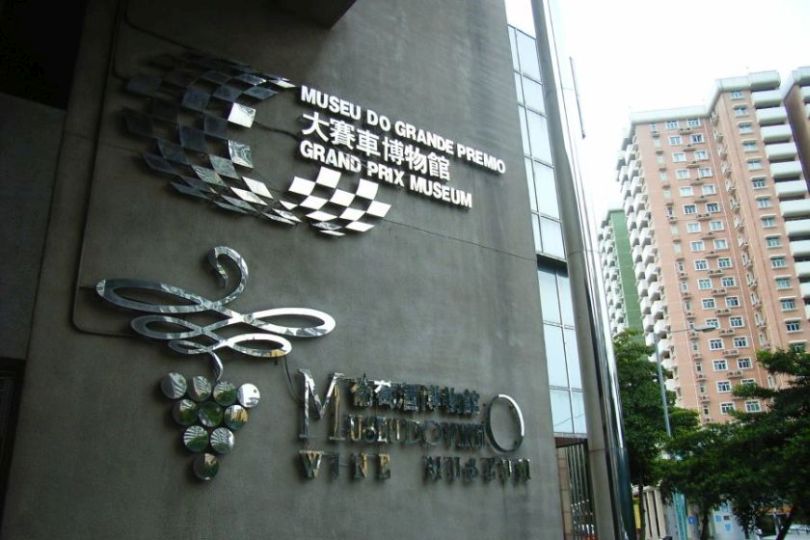
Grand Prix Museum was opened in 1993
New buildings, museum, pits and paddock complex in 1993
During all those years, Macau Guia Circuit remained the same, with the same layout that was created back in 1958. Of course, the safety was increasing year after year, with Armco barriers surrounding the complete course. For many years there was a gravel trap at R. Bend. It was removed in 1993 when a circuit underwent some improvements as a preparation for the 40th Grand Prix celebration. The pits, paddock complex and the start-finish line were removed on the part of the track between the R. Bend and the Reservoir Bend, so Turn 24 became the Turn 1.
The central place is the Grand Prix Building, that features a multi-level underground garage, a unique facility in the world’s motorsport. The Grand Prix Museum was also opened in 1993. One of the new buildings was the new control tower. Twenty years later, in 2013, as a part of the celebration for the 60th running of the Grand Prix, a brand new control tower was presented.
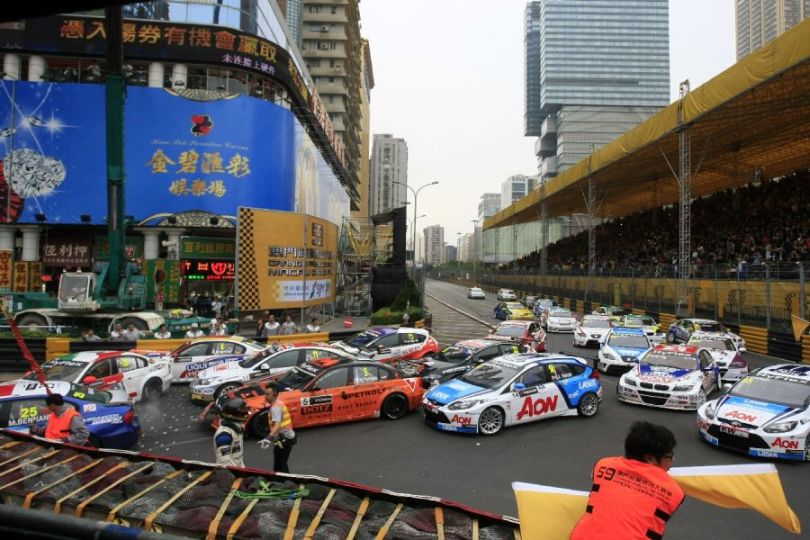
Traffic jam at Lisboa Bend
The Lisboa Bend saw many carnages
The Guia Circuit and its Macau Grand Prix event are popular among racers but also among fans. There are two major grandstands – the main grandstand along the pit straight and the other one at the Lisboa Bend.
That 90-degree is one of the best-known turns in the world, because of numerous carnages and pile-ups that happened there. Of course, as every other street circuit, the Guia circuit also has many spectator spots all around the track, on the buildings, bridges, fences, windows…
Address: Macau Grand Prix Committee, No.207, Av da Amizade, Edif. do Grande Premio, Macau
Phone: +853 8796 2268
Official website: www.macau.grandprix.gov.mo
Photos: macau.grandprix.gov.mo, Lau Ka-kuen,



